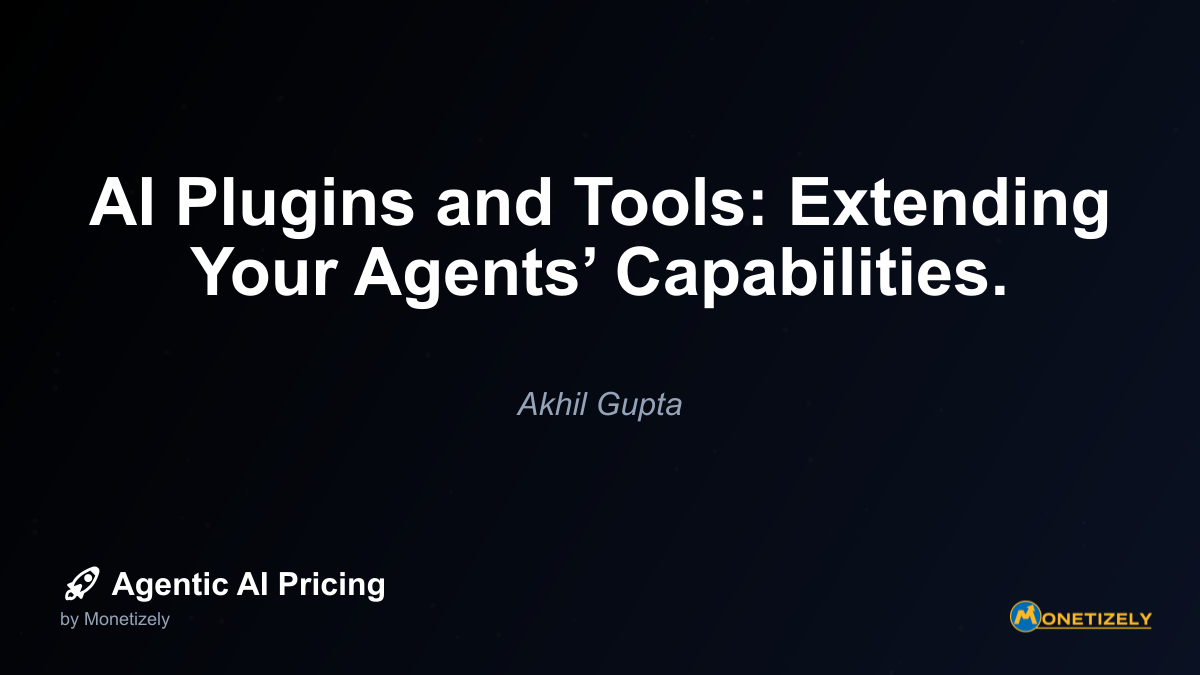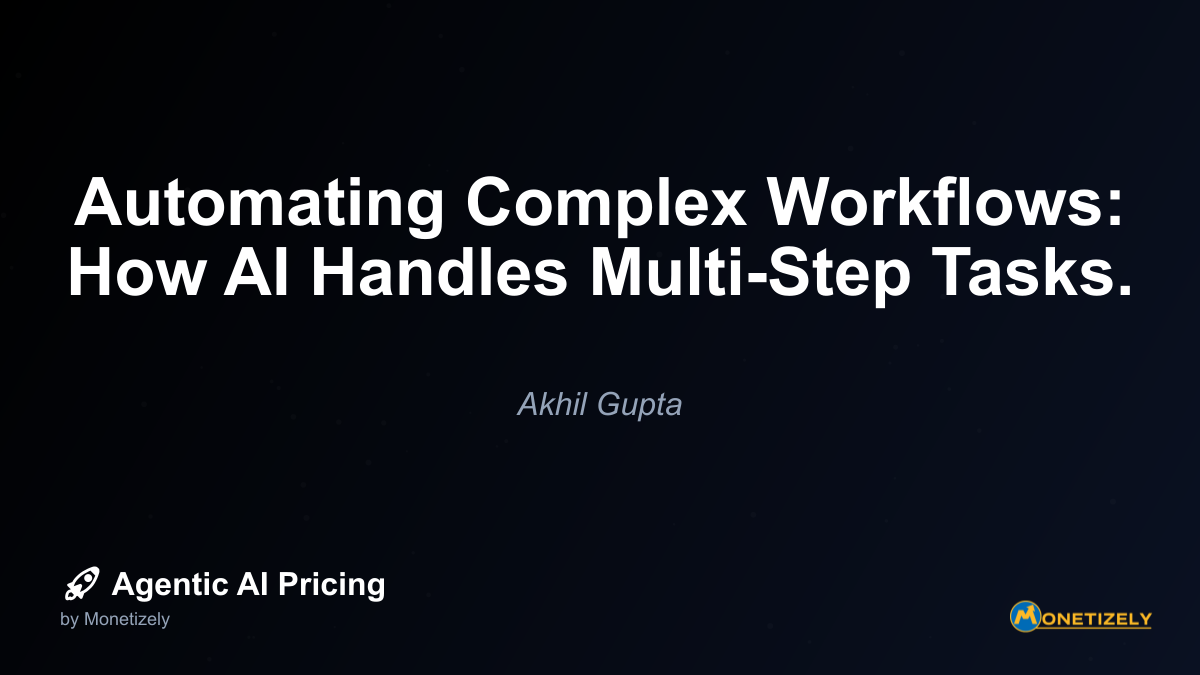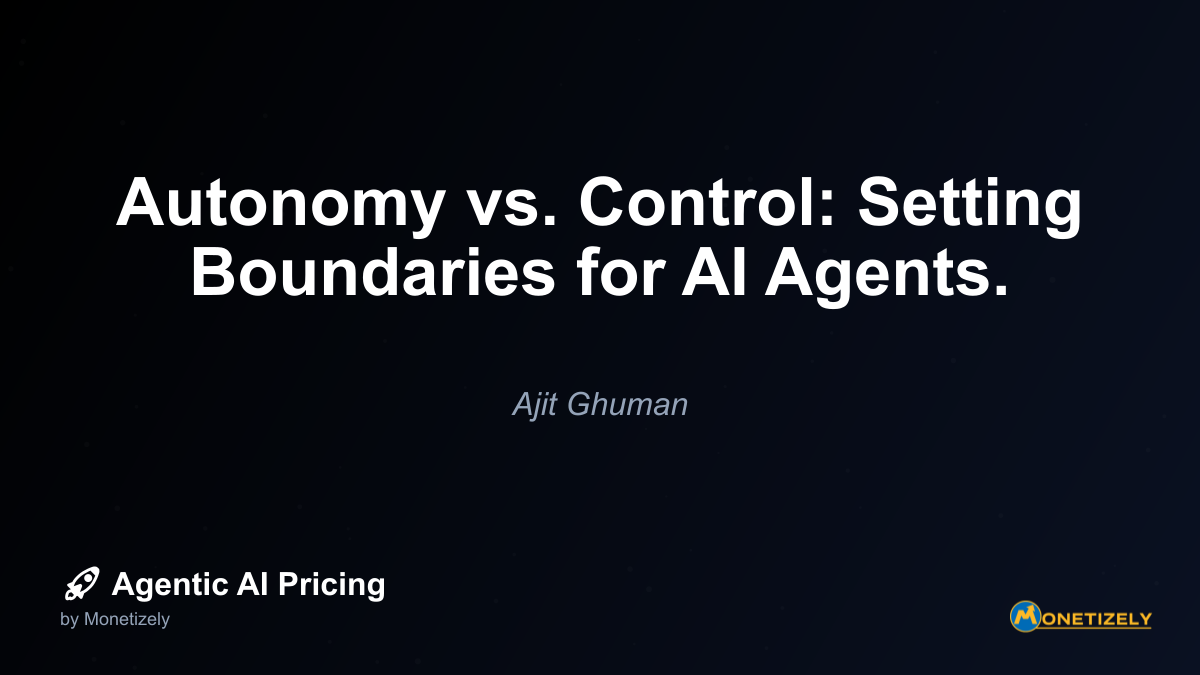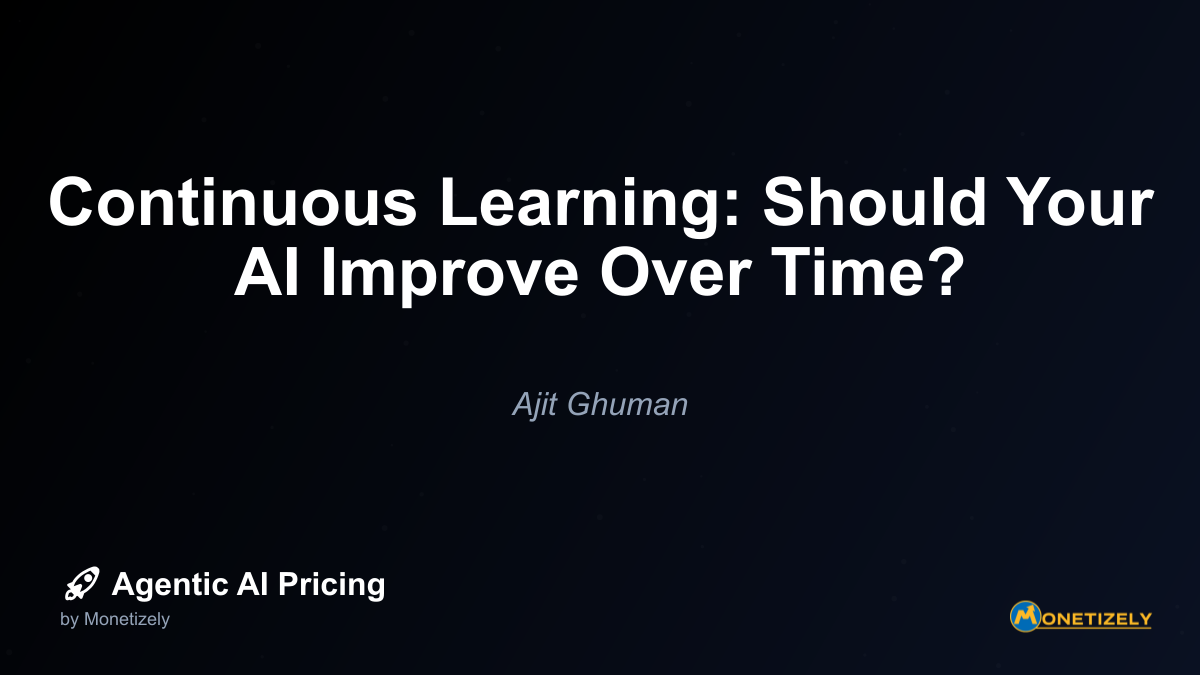· Akhil Gupta · Technical Insights · 5 min read
AI Agent Monitoring: Tools to Track Autonomous Systems.
AI and SaaS Pricing Masterclass
Learn the art of strategic pricing directly from industry experts. Our comprehensive course provides frameworks and methodologies for optimizing your pricing strategy in the evolving AI landscape. Earn a professional certification that can be imported directly to your LinkedIn profile.
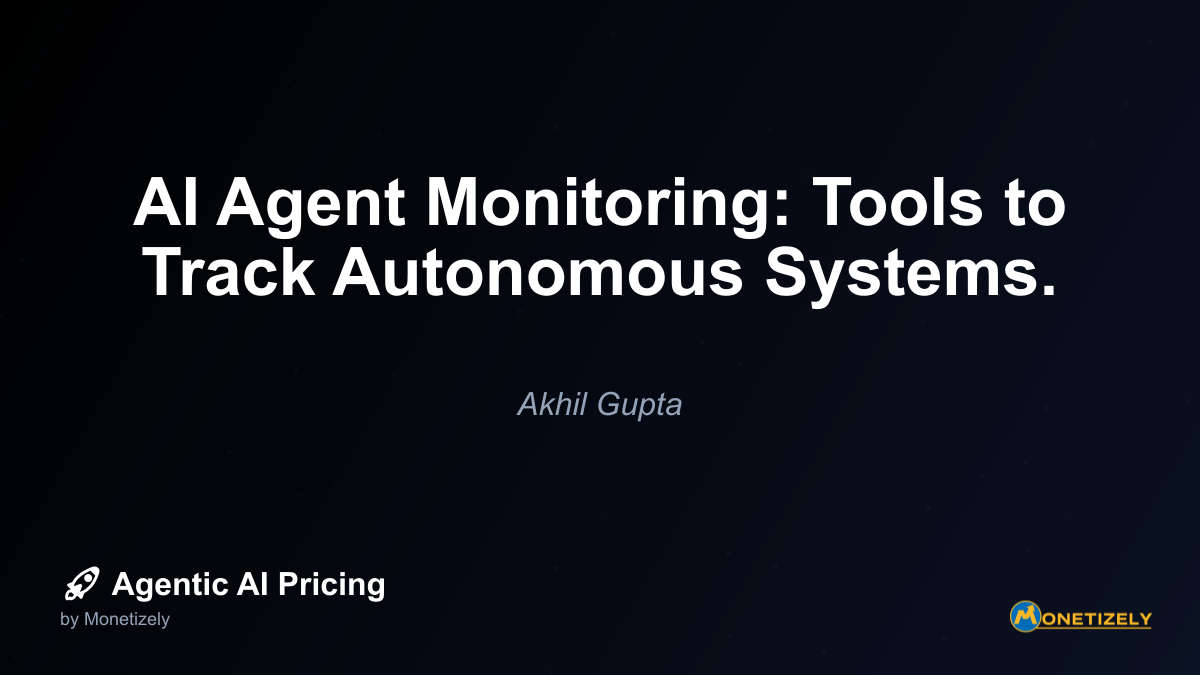
Implementation Best Practices for AI Agent Monitoring
Successfully implementing monitoring for autonomous systems requires thoughtful planning and execution. Here are key best practices to consider:
1. Design for Observability from the Start
Rather than treating monitoring as an afterthought, build observability into your AI agent architecture from the beginning:
- Instrument code thoroughly: Add telemetry points throughout the agent’s decision and action pathways
- Define clear logging standards: Establish consistent formats and severity levels
- Consider monitoring impact: Balance comprehensive monitoring with performance considerations
2. Implement Multi-Level Monitoring
Different stakeholders need different views of AI agent performance:
- Operational monitoring: Detailed technical metrics for engineering teams
- Business performance monitoring: KPIs aligned with business objectives for leadership
- Compliance monitoring: Audit trails and governance metrics for risk management
Effective monitoring dashboards should be tailored to each audience while maintaining a consistent view of underlying data.
3. Balance Automation and Human Oversight
While automated monitoring is essential, human judgment remains critical:
- Automated response for common issues: Configure systems to handle routine problems
- Human escalation paths: Define clear processes for involving human operators
- Continuous improvement cycles: Use monitoring insights to refine both the agent and monitoring systems
4. Implement Progressive Alerting
Not all issues require immediate attention. Implement tiered alerting strategies:
- Informational alerts: Non-critical notifications for awareness
- Warning alerts: Potential issues requiring attention but not immediate action
- Critical alerts: Serious problems requiring immediate intervention
- Emergency alerts: Severe issues potentially requiring system shutdown
5. Preserve Context for Troubleshooting
When issues occur, having complete context is essential for diagnosis:
- Capture full transaction history: Record complete sequences of events
- Preserve environmental state: Document the conditions in which issues occurred
- Maintain input/output records: Store what the agent received and produced
- Enable reproduction: Create mechanisms to replay problematic scenarios
Addressing Common AI Agent Monitoring Challenges
Organizations implementing AI agent monitoring typically encounter several common challenges:
Data Volume Management
AI agents can generate enormous volumes of monitoring data, creating storage and processing challenges. Strategies for managing this include:
- Sampling techniques: Collecting detailed data for a representative subset of transactions
- Tiered storage: Moving older data to lower-cost storage options
- Data summarization: Aggregating detailed data after a defined retention period
- Selective logging: Adjusting verbosity based on operational conditions
Privacy and Security Concerns
Monitoring data often contains sensitive information, creating privacy and security challenges:
- Data minimization: Collecting only necessary monitoring information
- Anonymization techniques: Removing or obscuring personally identifiable information
- Access controls: Limiting who can view different types of monitoring data
- Encryption: Protecting monitoring data both in transit and at rest
Interpreting Complex Behaviors
Understanding why AI agents make specific decisions can be challenging:
- Explainability tools: Implementing systems that document reasoning processes
- Decision tracing: Capturing step-by-step decision paths
- Confidence scoring: Recording the agent’s certainty about different decisions
- Alternative consideration logging: Documenting options the agent considered but rejected
Monitoring Distributed Agents
Many AI systems involve multiple agents working together, creating coordination monitoring challenges:
- Cross-agent tracing: Tracking interactions between different agents
- Centralized monitoring: Aggregating insights from distributed components
- Interaction visualization: Creating graphical representations of agent communications
- System-wide health metrics: Developing holistic measures of multi-agent system performance
The Future of AI Agent Monitoring
As AI agents become more sophisticated and autonomous, monitoring systems will need to evolve. Several emerging trends point to the future of AI agent observability:
Self-Monitoring Capabilities
Advanced AI agents will increasingly monitor their own performance:
- Self-diagnostic functions: Agents identifying their own operational issues
- Autonomous correction: Self-healing capabilities for common problems
- Performance self-optimization: Agents adjusting their own parameters based on monitoring data
- Confidence-based escalation: Automatic human involvement when uncertainty exceeds thresholds
Explainable AI Integration
As explainable AI techniques mature, they’ll be integrated into monitoring systems:
- Decision explanation generation: Automatic production of human-readable explanations
- Counterfactual analysis: Exploring “what if” scenarios to understand decisions
- Visual decision trees: Graphical representations of agent reasoning processes
- Natural language explanations: Human-friendly descriptions of agent behaviors
Regulatory Compliance Automation
As regulatory frameworks for AI evolve, monitoring systems will adapt:
- Compliance verification: Automatic checking against regulatory requirements
- Audit trail generation: Creating documentation for compliance purposes
- Bias detection: Identifying potential fairness issues in agent operations
- Regulatory reporting: Automating the production of required compliance reports
Ecosystem Monitoring
As AI agents increasingly operate as part of broader ecosystems, monitoring will expand:
- Cross-system observability: Tracking interactions with external systems
- Supply chain monitoring: Observing dependencies on other AI services
- Environmental impact tracking: Measuring resource consumption and efficiency
- Value chain visibility: Understanding how agents contribute to broader business processes
Conclusion: Building a Culture of AI Observability
Effective AI agent monitoring goes beyond implementing tools and technologies—it requires fostering an organizational culture that values observability and continuous improvement.
Organizations successfully monitoring AI agents typically:
- Prioritize transparency: Making agent operations visible and understandable
- Embrace continuous learning: Using monitoring insights to constantly improve
- Balance autonomy and oversight: Finding the right level of human involvement
- Implement feedback loops: Ensuring monitoring insights drive improvements
- Maintain human responsibility: Recognizing that humans remain accountable for AI systems
As AI agents take on increasingly important roles in business operations, robust monitoring becomes not just a technical necessity but a business imperative. Organizations that develop strong AI monitoring capabilities gain competitive advantages through improved reliability, better governance, and faster improvement cycles.
By implementing comprehensive monitoring solutions that provide visibility, alerting, and diagnostic capabilities, businesses can confidently deploy autonomous systems while maintaining appropriate control and oversight. The tools and approaches outlined in this article provide a starting point for building effective AI agent monitoring infrastructure suitable for production environments.
The journey toward effective AI agent monitoring is ongoing—as autonomous systems evolve, so too must our approaches to observing and understanding their operations. Organizations that invest in this capability now will be well-positioned to safely leverage increasingly autonomous AI agents in the future.
Co-Founder & COO
Akhil is an Engineering leader with over 16+ years of experience in building, managing and scaling web-scale, high throughput enterprise applications and teams. He has worked with and led technology teams at FabAlley, BuildSupply and Healthians. He is a graduate from Delhi College of Engineering and UC Berkeley certified CTO.
Pricing Strategy Audit
Let our experts analyze your current pricing strategy and identify opportunities for improvement. Our data-driven assessment will help you unlock untapped revenue potential and optimize your AI pricing approach.

